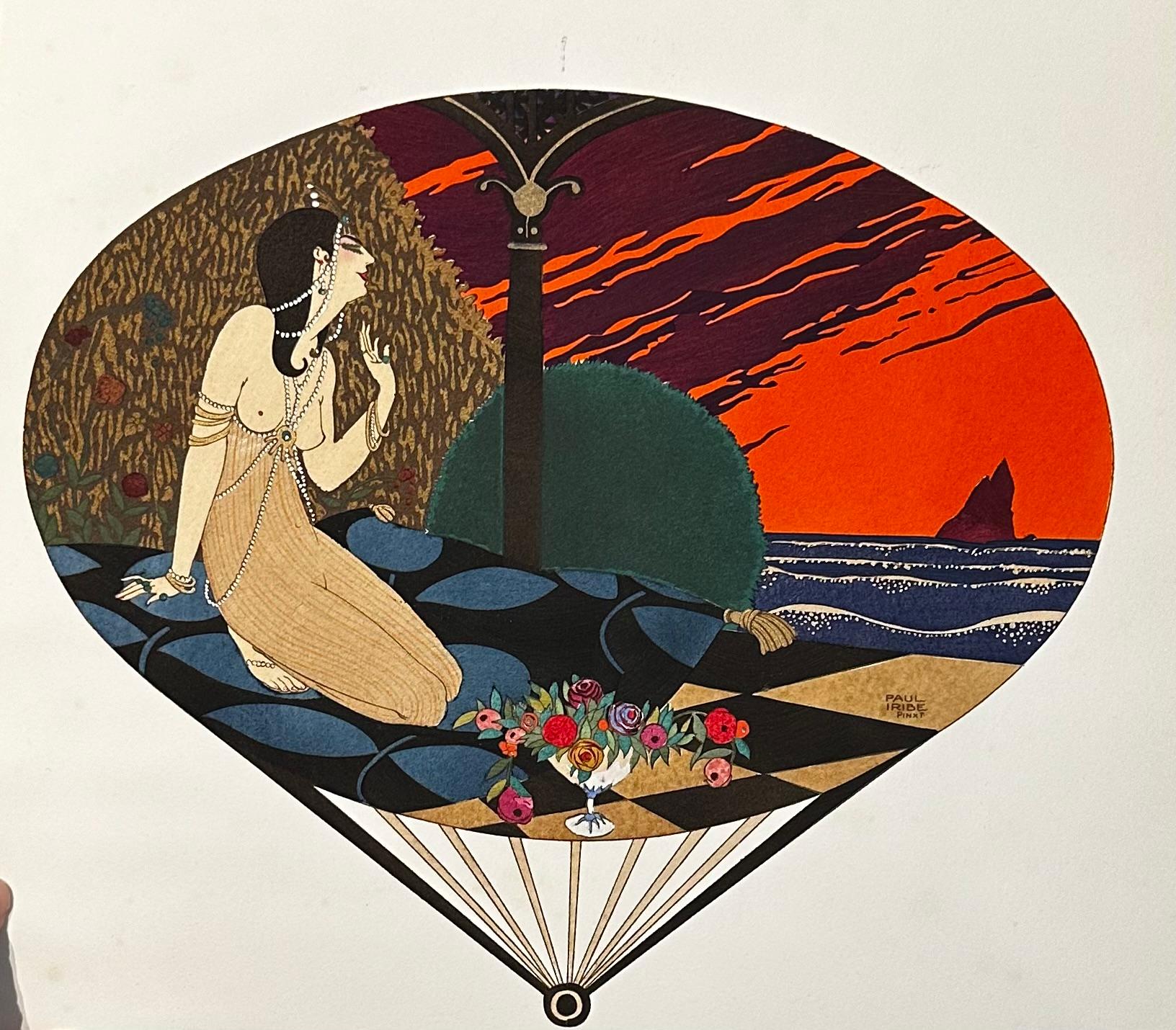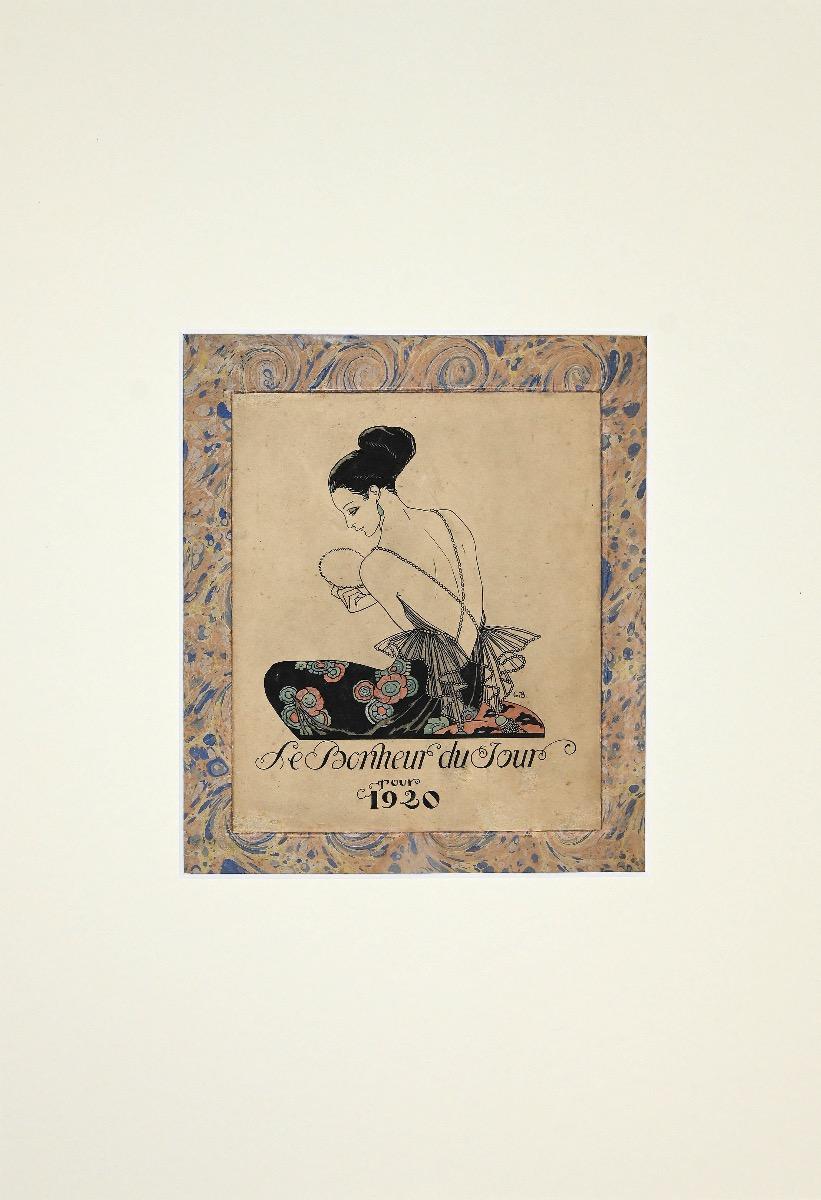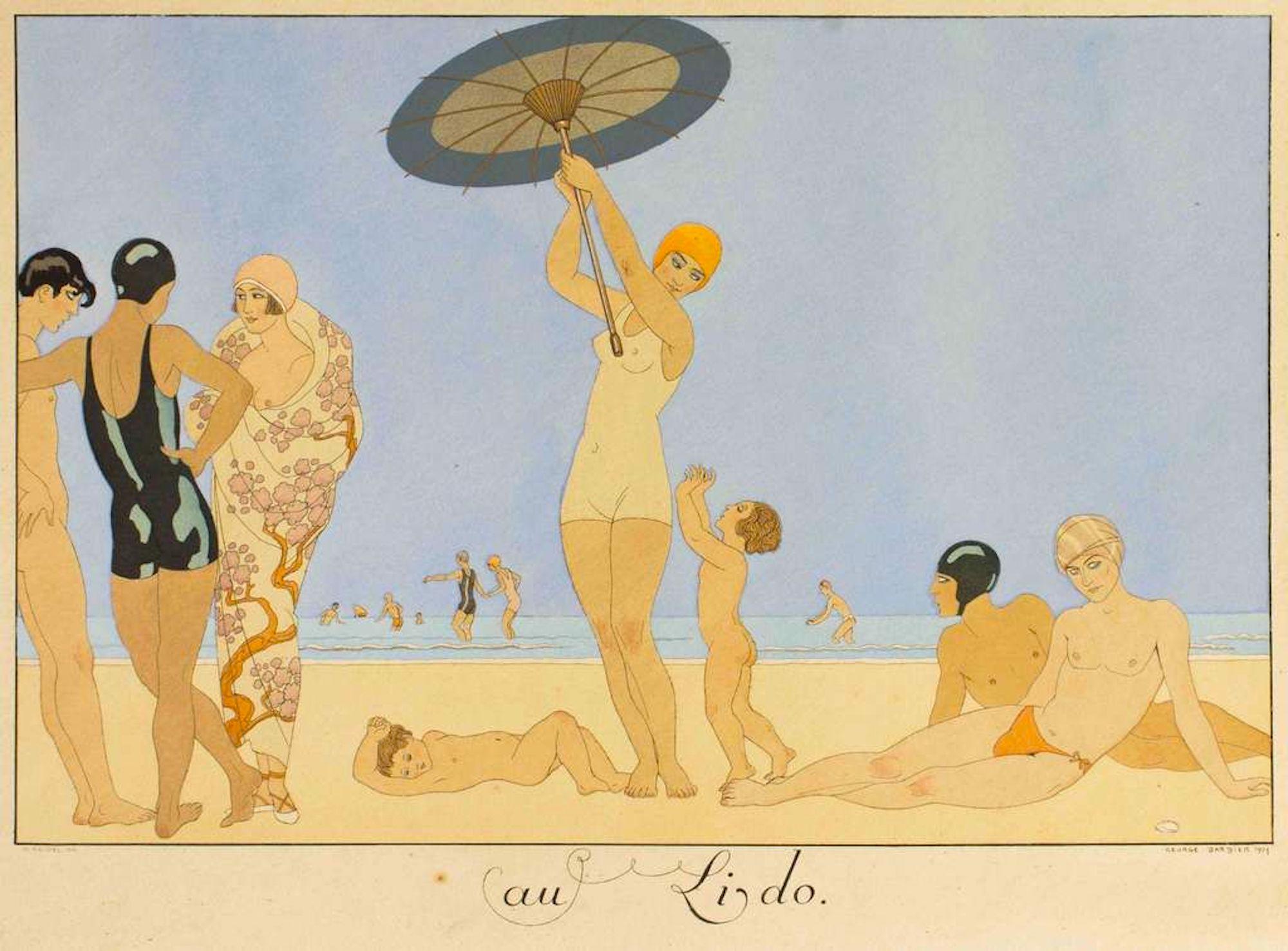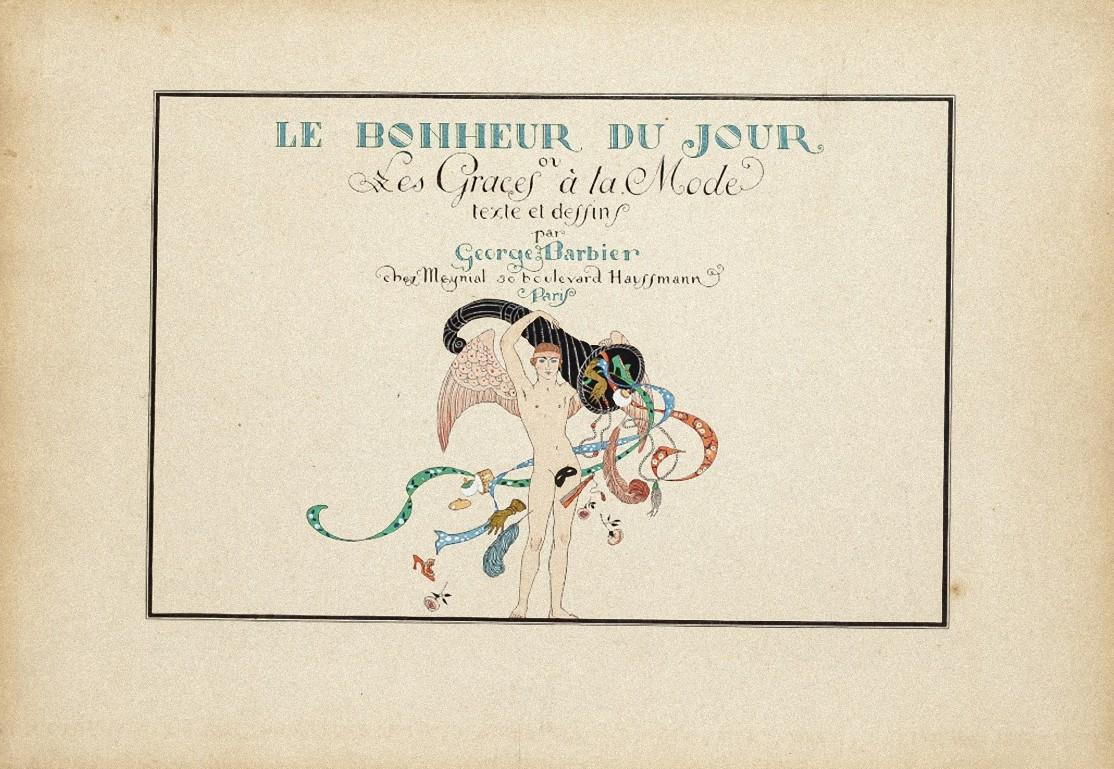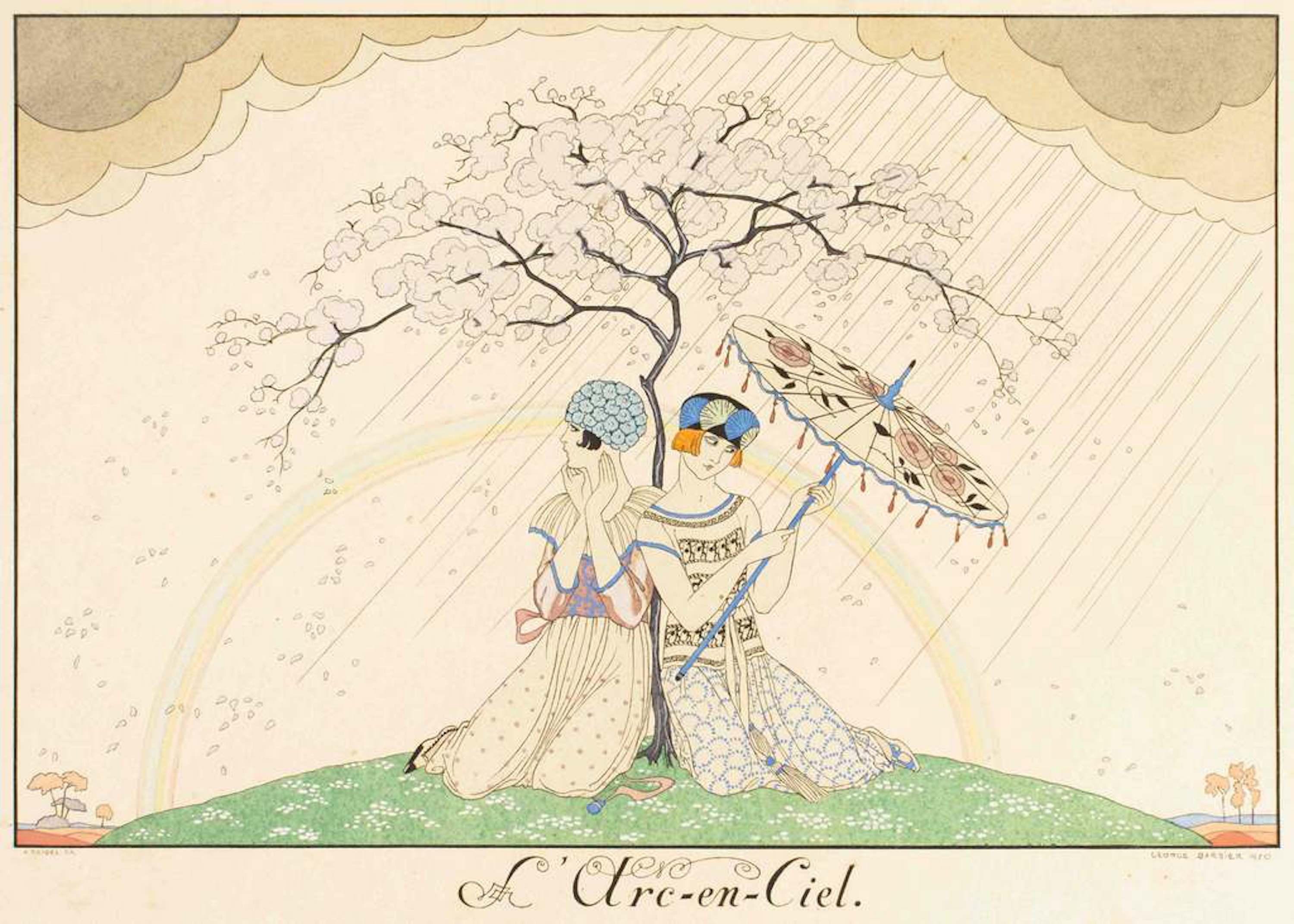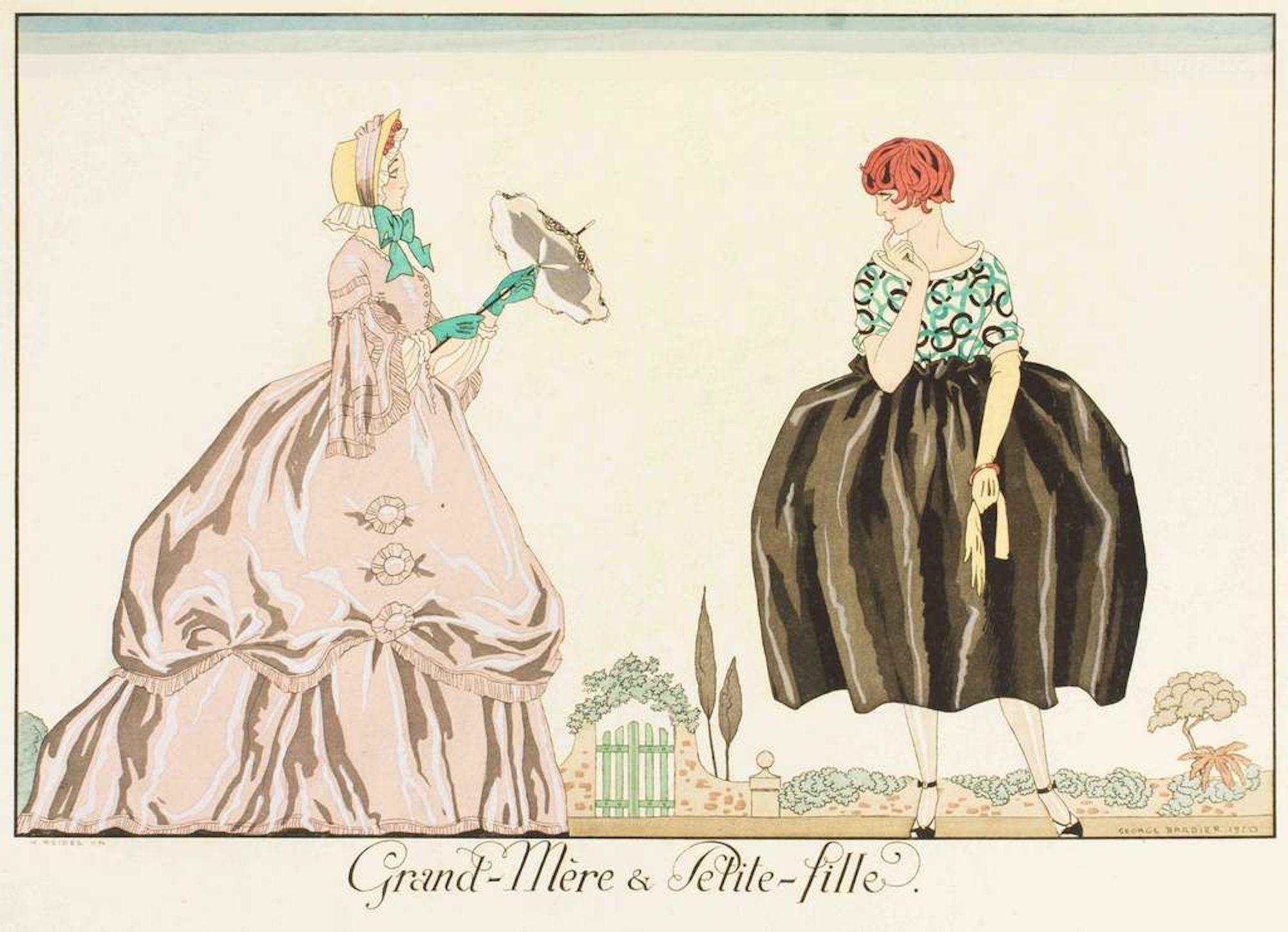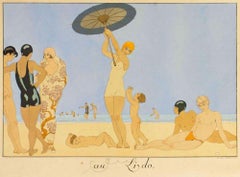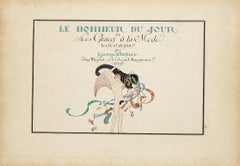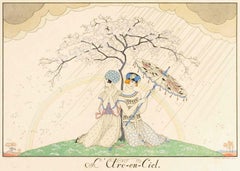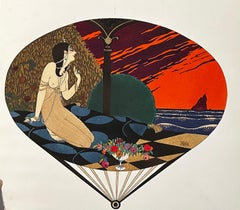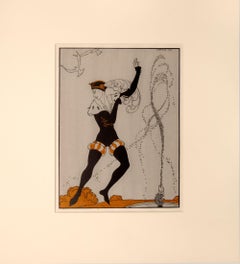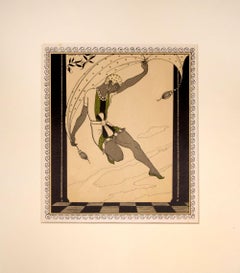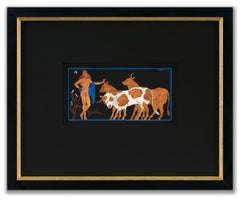Items Similar to L'apres-midi d'un Faune - Pochoir by G. Barbier - 1920
Want more images or videos?
Request additional images or videos from the seller
1 of 5
George BarbierL'apres-midi d'un Faune - Pochoir by G. Barbier - 19201920
1920
$2,871.44
£2,143.73
€2,400
CA$3,955.62
A$4,340.07
CHF 2,286.14
MX$51,629.69
NOK 29,285.17
SEK 26,741.36
DKK 18,288.92
About the Item
This is one of the artworks in the portfolio 'Le Bonheur du Jour', by George Barbier.
A very fine work of one of the most important and famous european illustrators of Art Deco, whose influence lasted decades after his premature death in 1932.
Excellent conditions.
- Creator:George Barbier (1882 - 1932, French)
- Creation Year:1920
- Dimensions:Height: 12.6 in (32 cm)Width: 17.72 in (45 cm)Depth: 0.04 in (1 mm)
- Medium:
- Movement & Style:
- Period:
- Condition:Insurance may be requested by customers as additional service, contact us for more information.
- Gallery Location:Roma, IT
- Reference Number:Seller: J-754831stDibs: LU65034715992
About the Seller
4.9
Platinum Seller
Premium sellers with a 4.7+ rating and 24-hour response times
1stDibs seller since 2017
7,858 sales on 1stDibs
Typical response time: 1 hour
- ShippingRetrieving quote...Shipping from: Grasse, France
- Return Policy
More From This Seller
View AllLe Bonheur du Jour - Pochoir by George Barbier - 1929
By George Barbier
Located in Roma, IT
Le Bonheur du Jour by George Barbie (Nantes, 1889 - Paris, 1932) is an original artwork realized in 1929 cover of the homonymous suite of pochoir realized b...
Category
1920s Art Deco Figurative Prints
Materials
Stencil
Au Lido - Pochoir by G. Barbier - 1920
By George Barbier
Located in Roma, IT
This pochoir belongs to the portfolio 'Le Bonheur du Jour', by George Barbier.
A very fine work of one of the most important and famous european illustrators of Art Deco, whose infl...
Category
1920s Art Deco Figurative Prints
Materials
Stencil
Frontispiece for Le Bonheur du Jour - Pochoir by G. Barbier - 1929
By George Barbier
Located in Roma, IT
Le Bonheur du Jour by George Barbie (Nantes, 1889 - Paris, 1932) is an artwork realized in 1929.
Original colored pochoir on cardboard.
Perfect conditions.
Le Bonheur du Jour is...
Category
1920s Art Deco Figurative Prints
Materials
Stencil
L'arc-en-ciel - Pochoir by G. Barbier - 1920
By George Barbier
Located in Roma, IT
This is one of the artworks in the portfolio 'Le Bonheur du Jour', by George Barbier.
Passepartout included : 34 x 49 cm
Category
1920s Post-Impressionist Figurative Prints
Materials
Stencil
Grand-mere et Petite-fille - Pochoir by G. Barbier - 1920
By George Barbier
Located in Roma, IT
This pochoir belongs to the portfolio 'Le Bonheur du Jour', by George Barbier.
A very fine work of one of the most important and famous european illustrators of Art Deco, whose infl...
Category
1920s Art Deco Figurative Prints
Materials
Stencil
Composition from "Le Bonheur du Jour" - Pochoir by Georges Barbier - 1929
By André Georges Barbier
Located in Roma, IT
Composition is an Original Pochoir from "Le Bonheur du Jour" realized by Georges Barbier in 1929.
Good condition.
The artwork represents the mastery of the artist and his use of ha...
Category
1920s Modern Figurative Prints
Materials
Paper, Stencil
You May Also Like
L'Eventail et la Fourrure chez Paquin
By George Barbier
Located in Wilton, CT
An illustrated catalog of Paquin's fur and fan designs from 1911. This album contains four fan designs, three fur designs, and one small black & white illustration by Lepape on the ...
Category
1910s Art Deco Figurative Prints
Materials
Gouache
$5,200 Sale Price
20% Off
Vaslav Nijinsky as Siegfried in Swan Lake.
By George Barbier
Located in London, GB
BARBIER, George.
Vaslav Nijinsky as Siegfried in Swan Lake.
London, C. W. Beaumont, 1913.
‘The designs, although somewhat fantastic in treatment, do convey the impression produced...
Category
1910s Art Nouveau Figurative Prints
Materials
Lithograph
Nijinsky in Cleopatre.
By George Barbier
Located in London, GB
BARBIER, George.
Nijinsky in Cleopatre.
London, C. W. Beaumont, 1913.
‘The designs, although somewhat fantastic in treatment, do convey the impression produced by Nijinsky in hi...
Category
1910s Art Nouveau Figurative Prints
Materials
Lithograph
Lykas, The Songs of Bilitis
By George Barbier
Located in London, GB
Watercolour and Chinese ink on paper, signed and dated (upper right), 10cm x 17cm (30cm x 38cm framed).
George Barbier was one of the great French illustrators of the early 20th century. Born in Nantes, France on 16 October 1882, Barbier was 29 years old when he mounted his first exhibition in 1911 and was subsequently swept to the forefront of his profession with commissions to design theatre and ballet costumes...
Category
1910s Art Nouveau Nude Drawings and Watercolors
Materials
Pencil, Ink, Watercolor
Nijinsky as 'the poet' in Les Sylphides.
By George Barbier
Located in London, GB
BARBIER, George.
Nijinsky as 'the poet' in Les Sylphides.
London, C. W. Beaumont, 1913.
‘The designs, although somewhat fantastic in treatment, do convey the impression produced b...
Category
1910s Art Nouveau Figurative Prints
Materials
Lithograph
Pierrot et Colombine
By George Barbier
Located in Wilton, CT
Fabulous gouache on paper for the Comedie de Française. This painting depicts Pierrot, the servant, and Columbine, who was the love interest of Harlequin. It is signed G. Barbier a...
Category
1910s Art Deco Figurative Paintings
Materials
Gouache
More Ways To Browse
Antique Bonheur Du Jour
Forum Piranesi
Francisco Rodon
Frank Howell Art
Frank Howell
Frey Basket
Friedrich Meckseper
Gary Benfield
Gay Vintage Jockstrap
Genieve Figgis
Georges Israel Editeur
German Color Woodcut
Giorgio Morandi On Sale
Gordon Stevenson
Green Jacket Alex Katz
Grun Poster
Guilty Mickey Mouse
Gustavo Rosa
